Medicine in medieval Egypt
(Wellcome Trust Research Resources Grant 105086/Z/14/Z)
Among the 350,000 fragments of medieval manuscripts retrieved from the Genizah of the Ben Ezra synagogue in Fustat (Old Cairo) are almost 2,000 leaves dealing with medicine, the medical profession and health problems. This material was discarded into the Genizah, a storage room for preserving worn-out sacred texts, but that was actually used to dispose of all kinds of written items including a very important cache of material related to the sciences. Dating mostly from the tenth to the thirteenth centuries, these fragments written in Hebrew, Arabic and Judaeo-Arabic (Arabic language in Hebrew letters) are a highly significant source for studying the transmission of medical knowledge and the actual practice of medicine in the Middle Ages. Which medical books were studied? Which circulated among physicians? What were the most common medical techniques? Which illnesses were most common? How did doctors and patients interact with each other? Like pieces of a puzzle, combining the information preserved in these 2,000 fragments helps us piece together a clearer picture of medicine in the Medieval Eastern Mediterranean.
Search the medical corpus of the Cairo Genizah
Watch ‘Beneficial, if God wills!’
A short documentary on the medical corpus of the Cairo Genizah. Written by Gabriele Ferrario. Filming, editing and music by Michele Banal
Research on Genizah fragments can only begin when the manuscripts have been thoroughly cleaned, conserved and placed in protective housing.
Watch the documentary ‘A Brush with History: Conserving the Genizah Collections’
A short movie covering the conservation of Genizah fragments from the Jacques Mosseri Collection at the UL, and showing the considerable amount of work required to clean and stabilise them to ensure they last another 1000 years.
Written by Gabriele Ferrario, Rebecca Goldie and Emma Nichols. Filming, editing and music by Michele Banal.
Visit virtual exhibitions on medical fragments from the Cairo Genizah
Over the two years of the project, Cambridge University Library hosted two displays of medical manuscripts from the Cairo Genizah. They are now accessible as virtual exhibitions on the Library’s site:
- The Fame of Avicenna’s Canon: A View from the Cairo Genizah
Cambridge University Library, Entrance Hall Exhibition, ‛The Fame of Avicenna’s’ Canon (January 2016) displayed Genizah fragments of Avicenna’s medical masterpiece in Arabic, Judaeo-Arabic, Hebrew and in an early Latin edition:
https://exhibitions.lib.cam.ac.uk/avicenna/
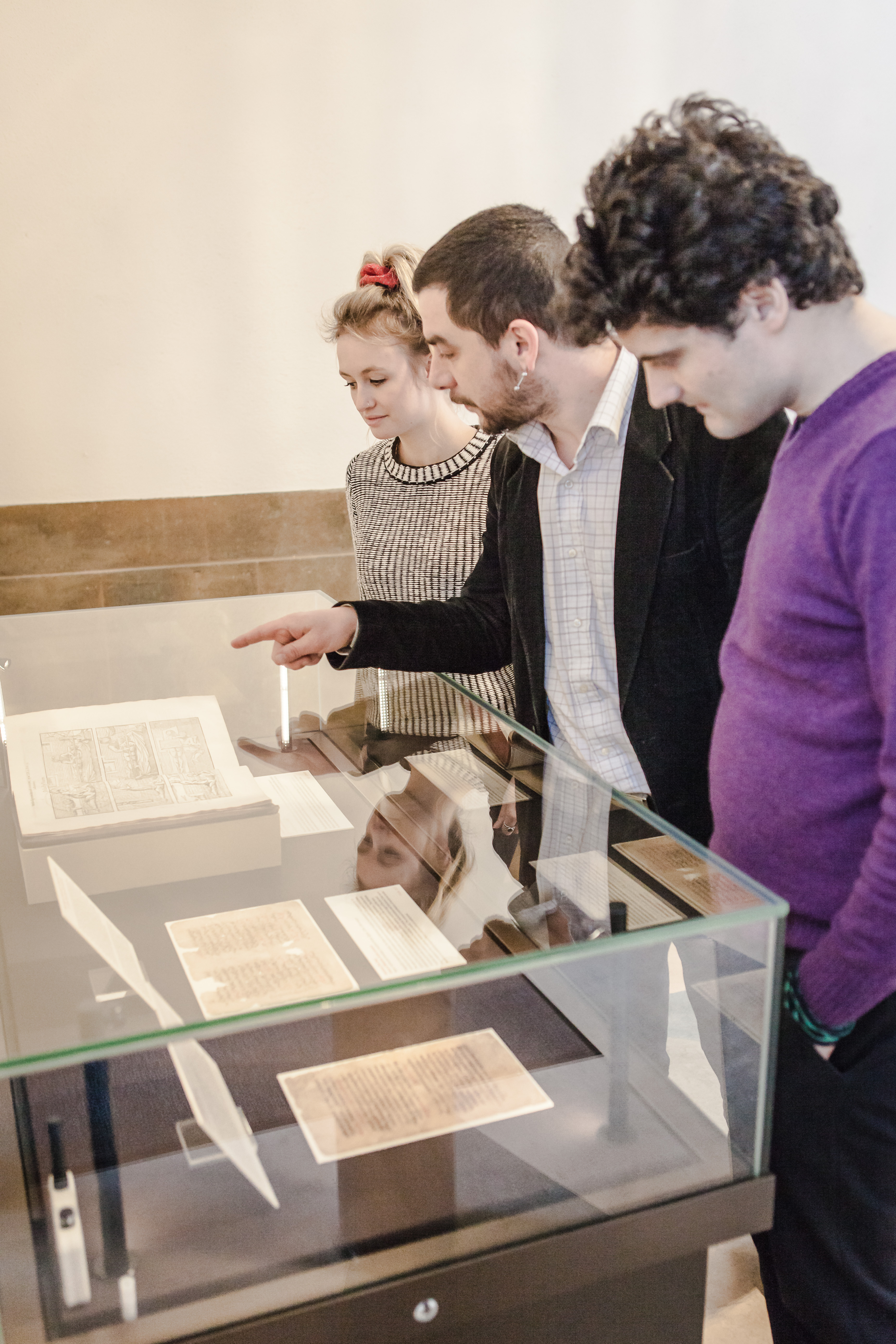
- Recipes, Prescriptions and Drugs from Medieval Egypt
Cambridge University Library, Entrance Hall Exhibition ‘Discovering Medieval Medicine in the Cairo Genizah’ (April-May 2017) focused on evidence from the Genizah for the everyday practice of medicine in medieval Cairo, with medical prescriptions, physician’s notes, lists of medicines and remedies, and autograph medical writings by the great polymath Moses Maimonides (d. 1205):
https://exhibitions.lib.cam.ac.uk/medicinegenizah/
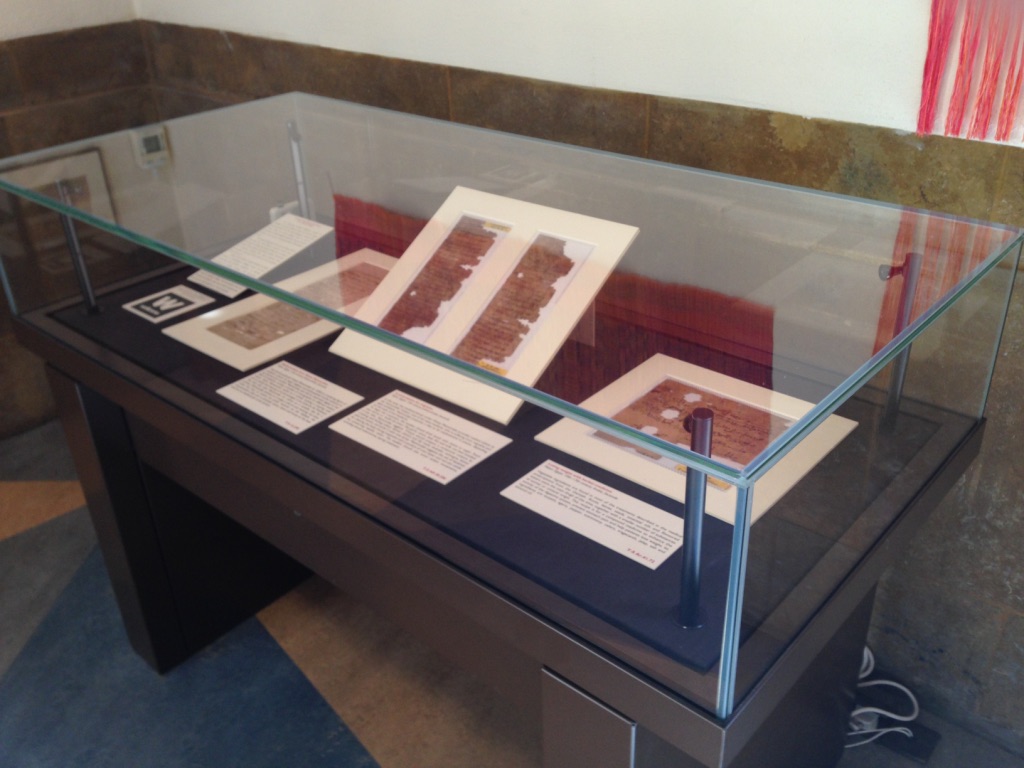
Selected online articles about the Genizah medical collection:
- Ferrario, G., ‘Plants on Maimonides’ Bookshelf: T-S Ar.41.41’, Taylor-Schechter Genizah Research Unit’s Fragment of the Month (January 2017).
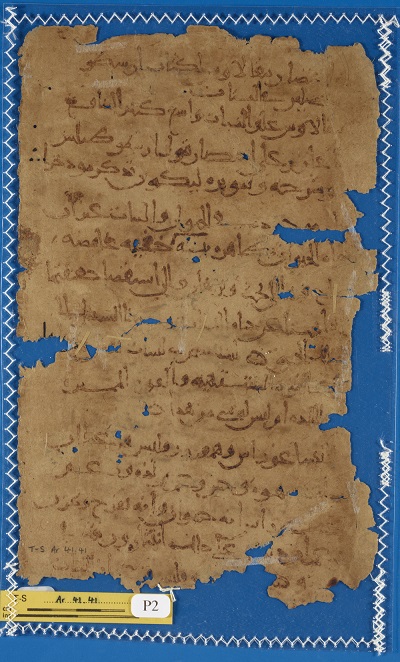
- Mesler, K., ‘The long Art: T-S AS 144.331’, Taylor-Schechter Genizah Research Unit’s Fragment of the Month (December 2016).
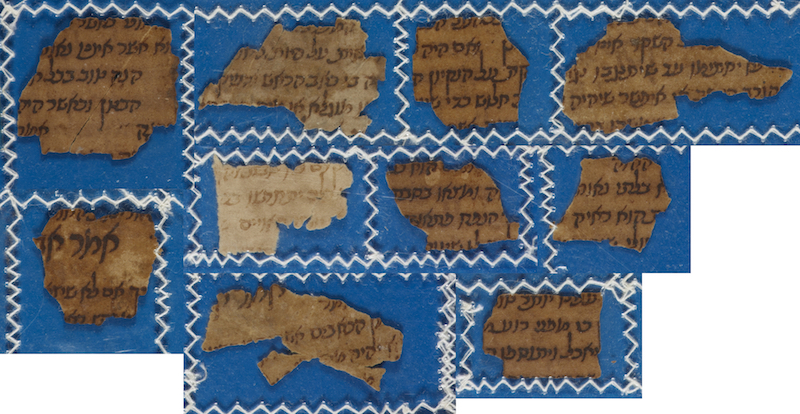
- Elbaum, A., ‘The Pursuit of Happiness: T-S Ar.44.201’, Taylor-Schechter Genizah Research Unit’s Fragment of the Month (September 2016).
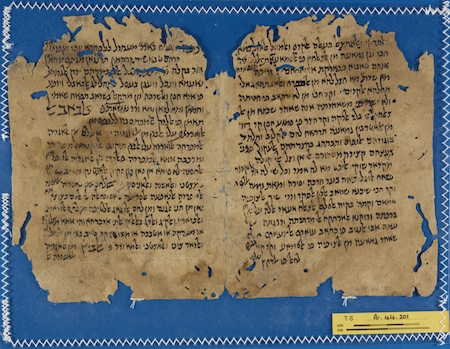
- Ferrario, G., ‘The earliest known fragment of Qusṭā ibn Lūqā’s Book on Numbness: T-S K6.194’, Taylor-Schechter Genizah Research Unit’s Fragment of the Month (September 2015).
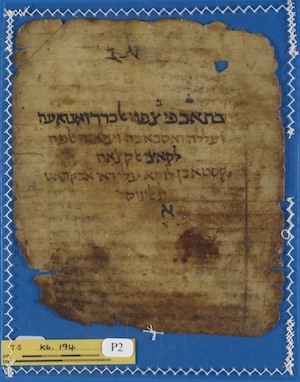
- Ashur, A., ‘A newly discovered medical recipe written by Maimonides: Mosseri I.115.1’, Taylor-Schechter Genizah Research Unit’s Fragment of the Month (March 2014).
- Bhayro, S. and Outhwaite, B., ‘The first discovery of Judaeo-Syriac: T-S K14.22’, Taylor-Schechter Genizah Research Unit’s Fragment of the Month (August 2013).
- Lev, E., Chipman, L., ‘Rhubarb and dodder and absinth, Or.1081 J39’, Taylor-Schechter Genizah Research Unit’s Fragment of the Month (February 2011).
Select bibliography for medicine in the Cairo Genizah
(for a complete list of related reference literature click here)
- Allony, N., Jewish Library in the Middle Ages: Book Lists from the Cairo Genizah, Frenḳel, M., Ben-Shammai, H., Soḳolow, M. (eds.), Makhon Ben-Zvi le-heḳer Ḳehilot Yiśraʾel ba-mizraḥ, Jerusalem 2006 [Hebr.].
- Baker, C., “Islamic and Jewish Medicine in the Medieval Mediterranean World: the Genizah Evidence”, Journal of the Royal Society of Medicine, 69 (1996): 577–580.
- Chipman, L., Lev, E., “Syrup from the Apothecary's Shop: A Genizah fragment containing one of the earliest manuscripts of Mihaj al-dukkan”, Journal of Semitic Studies 51 (2006): 137–68.
- Cohen, M., “The Burdensome Life of a Jewish Physician and Communal Leader: A Genizah Fragment from the Alliance Israelite Universelle Collection”, Jerusalem Studies in Arabic and Islam 16 (1993): 123–36.
- Fenton, P., “The Importance of the Cairo Genizah for the History of Medicine”, Medical History 24 (1980): 347–8.
- Goitein, S.D., “The Medical Profession in the Light of the Cairo Genizah Documents”, Hebrew Union College Annual 34 (1963): 177–94.
- Gottheil, R., “Fragments Treating of Medicine from the Cairo Genizah”, Journal of the American Oriental Society 50 (1930): 112–24.
- Gottheil, R., “Further Fragments on Medicine from the Genizah”, The Jewish Quarterly Review 21 (1931): 419–38.
- Gottheil, R., “A Genizah Fragment of a Treatise on the Sciences in General”, The Jewish Quarterly Review 23 (1932): 163–80.
- Isaacs, H.D., Baker, C.F., Medical and para-medical manuscripts in the Cambridge Genizah Collections, Cambridge University Press, Cambridge 1994.
- Lev, E., “Drugs Held and Sold by Pharmacists of the Jewish Community of Medieval (11th-14th centuries) Cairo According to Lists of materia medica found at the Taylor-Schechter Genizah Collection, Cambridge”, Journal of Ethnopharmacology 110 (2007): 275–93.
- Lev, E., Amar, Z., Practical Materia Medica of the Medieval Eastern Mediterranean According to the Cairo Genizah, Brill, Leiden-Boston 2008.
- Lev, E., Niessen, F., “Addenda to Isaacs Catalogue ‘Medical and Para-medical Manuscript in the Cambridge Genizah Collection' Together with the Edition of Two Medical Documents T-S 12.33 and T-S NS 297.56”, Hebrew Union College Annual 77, (2008): 131–165.
- Lev, E., “A Catalogue of the Medical and Para-Medical Manuscripts in the Mosseri Genizah Collection, together with several unpublished examples (X.37; I.124.2)”, Journal of Jewish Studies 62, (2011):121–145.
’Medicine in medieval Egypt: creating online access to the medical corpus of the Cairo Genizah’
This project was made possible by the Wellcome Trust Research Resources Grant 105086/Z/14/Z & Provision for Public Engagement

